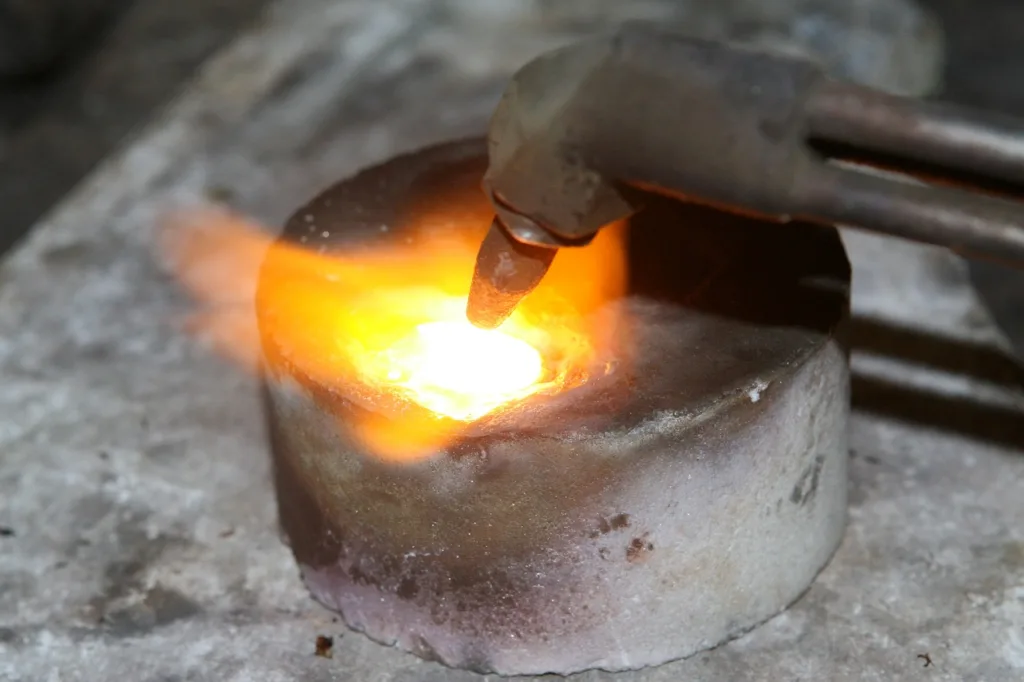Platinum is a highly valued metal due to its unique properties and wide range of applications. One of the most important characteristics of platinum is its melting point. The melting point of platinum is 1,774 degrees Celsius, which is higher than most othr metals. This means that platinum requires a higher temperature to melt compared to other metals.
The high melting point of platinum makes it an ideal metal for use in high-temperature applications. For example, it is used in the production of crucibles, which are containers used for melting and analyzing metals and other substances at high temperatures. Platinum is also commonly used in the production of thermocouples, which are temperature sensors used in industrial and scientific applications.
In addition to its high melting point, platinum also has a very high boiling point of 3,827 degrees Celsius. This means that platinum can withstand very high temperatures without changing its physical properties. It is also resistant to corrosion, making it ideal for use in harsh environments.
Despite its high melting point, platinum can be dissolved into gallium at a temperature of 300 degrees Celsius. This liquid format of platinum is highly efficient as a catalyst. Platinum is also soluble in aqua regia, a mixture of nitric acid and hydrochloric acid commonly used by jewelers to test the purity of gold.
The high melting point of platinum is one of its most important properties. This characteristic makes platinum ideal for use in high-temperature applications and gives it unique properties that make it an essential metal in many industries. Whether it is used in the production of thermocouples or as a catalyst, platinum’s high melting point and other unique properties make it a valuable metal that will continue to play an important role in industry and technology for years to come.
What Is Platinum Melting And Boiling Point?
Platinum, a precious metal, has a remarkably high melting point of 1,774 degrees Celsius, making it one of the most heat-resistant metals in existence. When heated, it retains its silvery-white color and does not oxidize. Moreover, platinum has an equally impressive boiling point of 3,827 degrees Celsius, indicating its exceptional stability at high temperatures. At room temperature, platinum has a density of 21.45 grams per cubic centimeter, which is higher than most other metals. platinum is a highly durable and heat-resistant metal with a melting point of 1,774 degrees Celsius and a boiling point of 3,827 degrees Celsius.

Can Platinum Turn Into A Liquid?
Platinum can turn into a liquid state. Like any other metal, platinum has a melting point, which is the temperature at which it changes from a solid to a liquid. Platinum usually has a melting point of 1700°C, which is relatively high compared to other metals. However, it can be dissolved into gallium after beig heated at 300°C for a couple of hours. Gallium is a metal that has a melting point of only 29.76°C, which means it can turn into a liquid state at room temperature. Once platinum is dissolved in gallium, it becomes a liquid mixture, and the platinum becomes a very efficient catalyst. This liquid mixture can be used in various applications that require platinum’s catalytic properties.
What Can Destroy Platinum?
Platinum, a highly valued precious metal, can be destroyed by a few methods. The most common one is the use of aqua regia, a powerful acid that can dissolve platinum over time. However, it is important to note that aqua regia can also dissolve oher metals such as gold and silver, so it is not a recommended method for testing their purity.
Another way to destroy platinum is through extreme heat. Platinum has a high melting point of 1,768 degrees Celsius, but if exposed to temperatures beyond this point, it can melt and lose its shape and structure.
Platinum can also be destroyed through physical damage, such as crushing or grinding it into a powder. This can alter its properties and make it unusable for its intended purpose.
It is important to handle platinum with care and avoid exposing it to harsh chemicals or extreme temperatures to prevent its destruction.
Conclusion
Platinum is a precious metal with a high melting point of 1,774 deg C, making it an excellent material for high-temperature applications. Its ability to dissolve in gallium at lower temperatures and become a highly efficient catalyst is a unique property that makes it useful in various industries. While aqua regia can slowly dissolve platinum, it is crucial to handle it with care as it is a valuable and rare metal. platinum’s high melting point and unique properties make it a valuable and versatile material in various fields, from jewelry-making to industrial applications.
